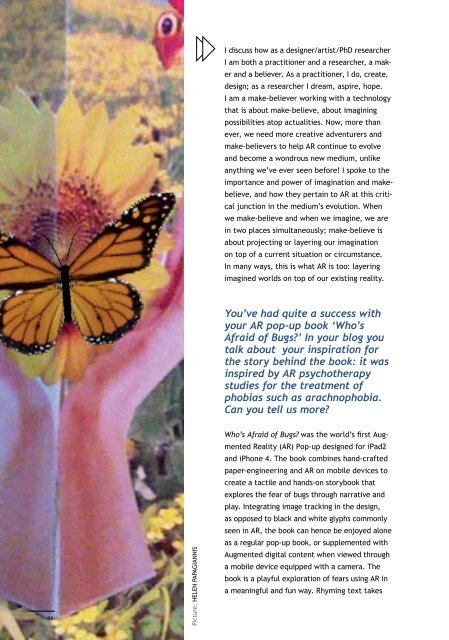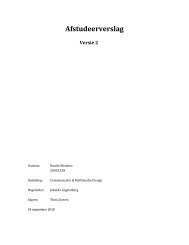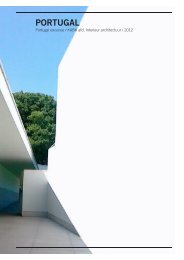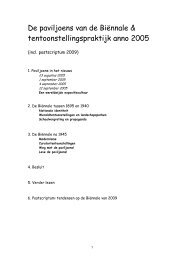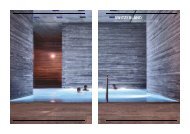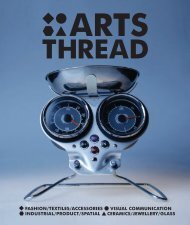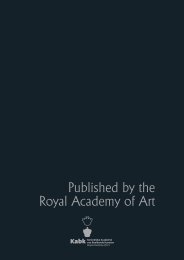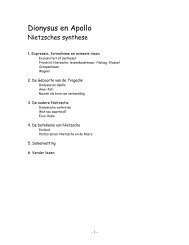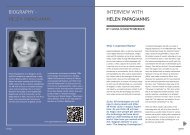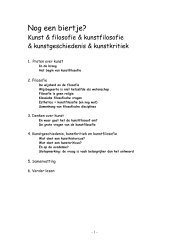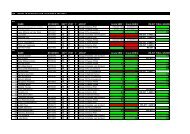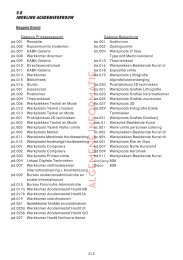download LR pdf - Kabk
download LR pdf - Kabk
download LR pdf - Kabk
You also want an ePaper? Increase the reach of your titles
YUMPU automatically turns print PDFs into web optimized ePapers that Google loves.
Picture: Helen PapagiannisI discuss how as a designer/artist/PhD researcherI am both a practitioner and a researcher, a makerand a believer. As a practitioner, I do, create,design; as a researcher I dream, aspire, hope.I am a make-believer working with a technologythat is about make-believe, about imaginingpossibilities atop actualities. Now, more thanever, we need more creative adventurers andmake-believers to help AR continue to evolveand become a wondrous new medium, unlikeanything we’ve ever seen before! I spoke to theimportance and power of imagination and makebelieve,and how they pertain to AR at this criticaljunction in the medium’s evolution. Whenwe make-believe and when we imagine, we arein two places simultaneously; make-believe isabout projecting or layering our imaginationon top of a current situation or circumstance.In many ways, this is what AR is too: layeringimagined worlds on top of our existing reality.You’ve had quite a success withyour AR pop-up book ‘Who’sAfraid of Bugs?’ In your blog youtalk about your inspiration forthe story behind the book: it wasinspired by AR psychotherapystudies for the treatment ofphobias such as arachnophobia.Can you tell us more?Who’s Afraid of Bugs? was the world’s first AugmentedReality (AR) Pop-up designed for iPad2and iPhone 4. The book combines hand-craftedpaper-engineering and AR on mobile devices tocreate a tactile and hands-on storybook thatexplores the fear of bugs through narrative andplay. Integrating image tracking in the design,as opposed to black and white glyphs commonlyseen in AR, the book can hence be enjoyed aloneas a regular pop-up book, or supplemented withAugmented digital content when viewed througha mobile device equipped with a camera. Thebook is a playful exploration of fears using AR ina meaningful and fun way. Rhyming text takesthe reader through the storybook where various‘creepy crawlies’ (spider, ant, and butterfly) areawaiting to be discovered, appearing virtuallyas 3D models you can interact with. A tarantulaattacks when you touch it, an ant hyperlinks toeducational content with images and diagrams,and a butterfly appears flapping its wings atopa flower in a meadow. Hands are integratedthroughout the book design, whether its pla cingone’s hand down to have the tarantula crawlover you virtually, the hand holding the magnifyinglens that sees the ant, or the hands that popupholding the flower upon which the butterflyappears. It’s a method to involve the reader inthe narrative, but also comments on the uniquetactility AR presents, bridging the digital withthe physical. Further, the story for the ARPop-up Book was inspired by AR psychotherapystudies for the treatment of phobias such asarachnophobia. AR provides a safe, controlledenvironment to conduct exposure therapywithin a patient’s physical surroundings, creatinga more believable scenario with heightenedpresence (defined as the sense of really being inan imagined or perceived place or scenario) andprovides greater immediacy than in Virtual Reality(VR). A video of the book may be watched athttp://vimeo.com/25608606.In your work, technology servesas an inspiration. For example,rather than starting with a storywhich is then adapted to a certaintechnology, you start out withAR technology, investigate itsstrengths and weaknesses and sothe story evolves. However, thisdoes not limit you to only use thestrength of a medium.On the contrary, weaknesses suchas accidents and glitches havefor example influenced your work‘Hallucinatory AR’. Can you tell usa bit more about this work?Hallucinatory Augmented Reality (AR), 2007,was an experiment which investigated thepossibility of images which were not glyphs/ARtrackables to generate AR imagery. The projectsevolved out of accidents, incidents in earlierexperiments in which the AR software was mistakingnon-marker imagery for AR glyphs andattempted to generate AR imagery. This confusion,by the software, resulted in unexpectedand random flickering AR imagery. I decided toexplore the creative and artistic possibilitiesof this effect further and conduct experimentswith non-traditional marker-based tracking.The process entailed a study of what types ofnon-marker images might generate such ‘hallucinations’and a search for imagery that wouldevoke or call upon multiple AR imagery/videosfrom a single image/non-marker.Upon multiple image searches, one imageemerged which proved to be quite extraordinary.A cathedral stained glass window wasable to evoke four different AR videos, the onlyinstance, from among many other images, inwhich multiple AR imagery appeared. Upon closeexamination of the image, focusing in and outwith a web camera, a face began to emerge inthe black and white pattern. A fantastical imageof a man was encountered. Interestingly, itwas when the image was blurred into this faceusing the web camera that the AR hallucinatoryimagery worked best, rapidly multiplying andappearing more prominently. Although numerousattempts were made with similar images,no other such instances occurred; this imageappeared to be unique.The challenge now rested in the choice of whattypes of imagery to curate into this hallucinatoryviewing: what imagery would be best suited tothis phantasmagoric and dream-like form?My criteria for imagery/videos were like-formand shape, in an attempt to create a collage-likeset of visuals. As the sequence or duration ofthe imagery in Hallucinatory AR could not bepredetermined, the goal was to identify imagery16 17


